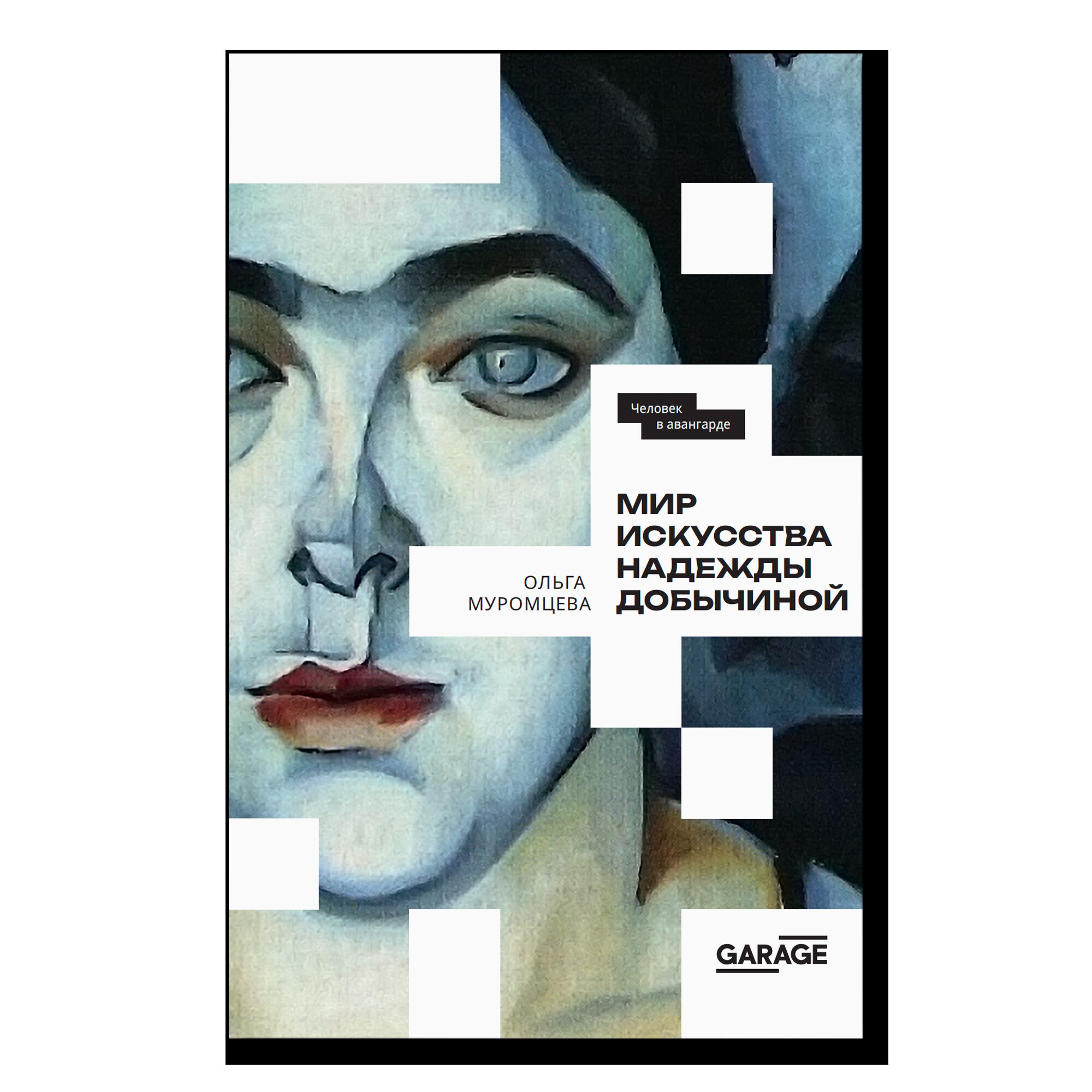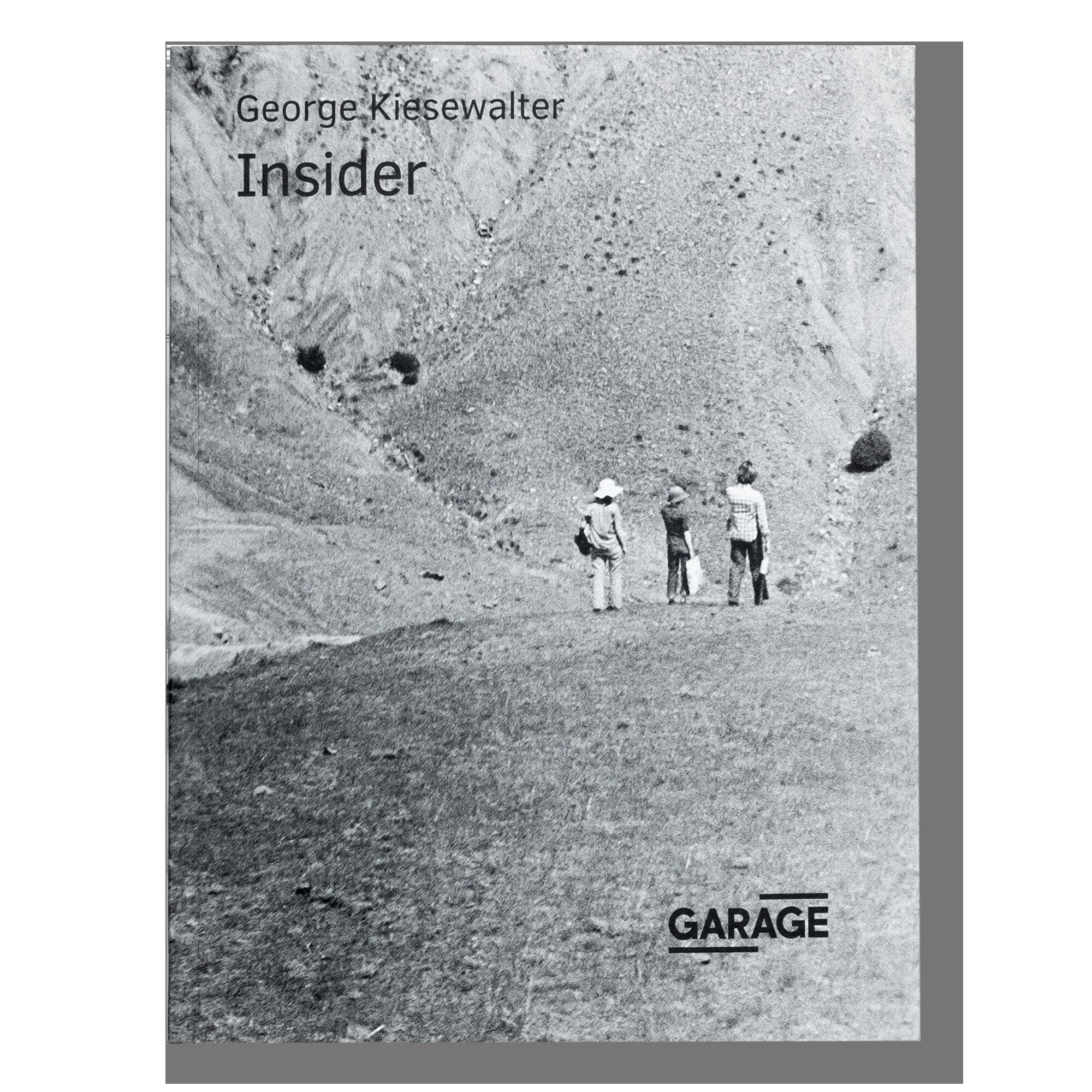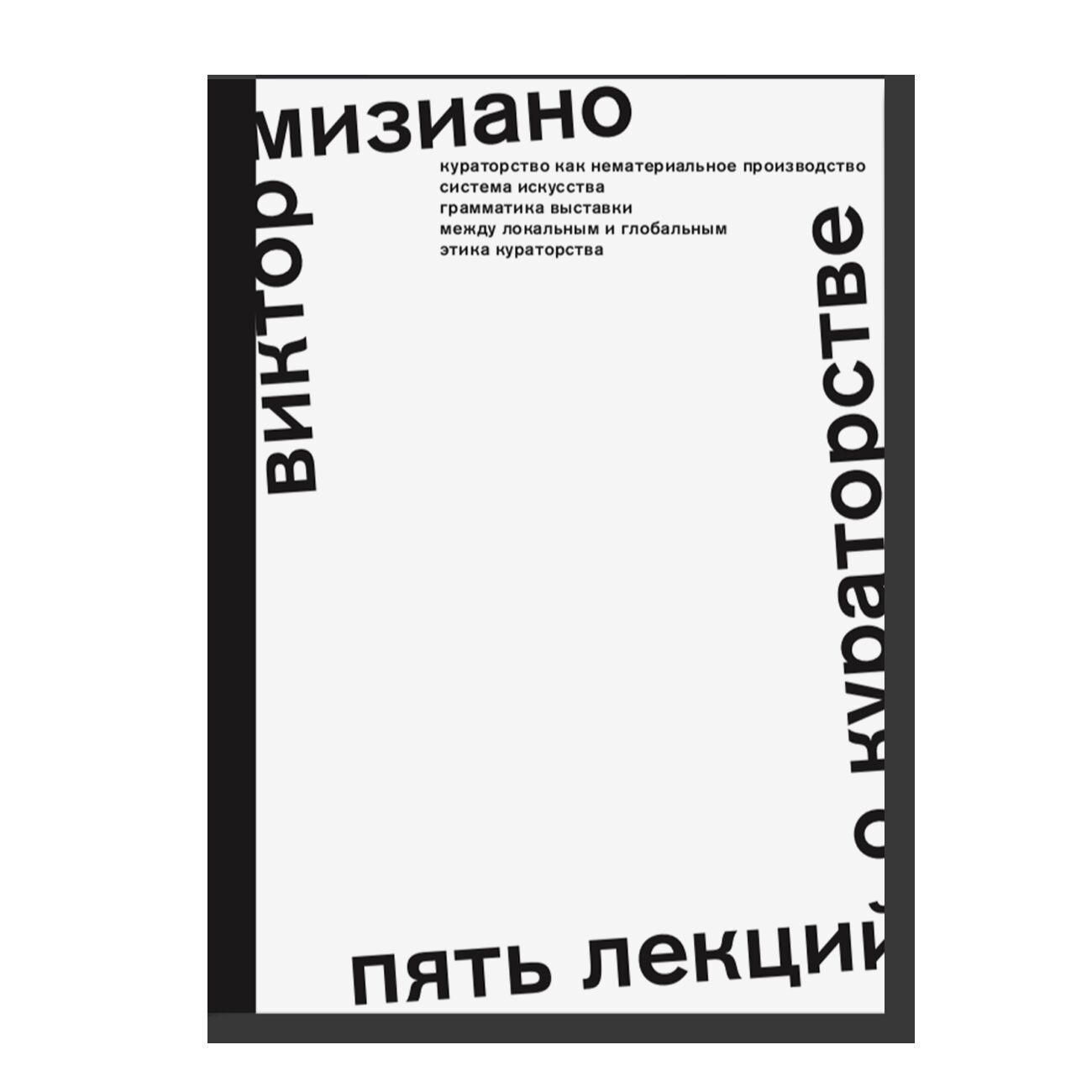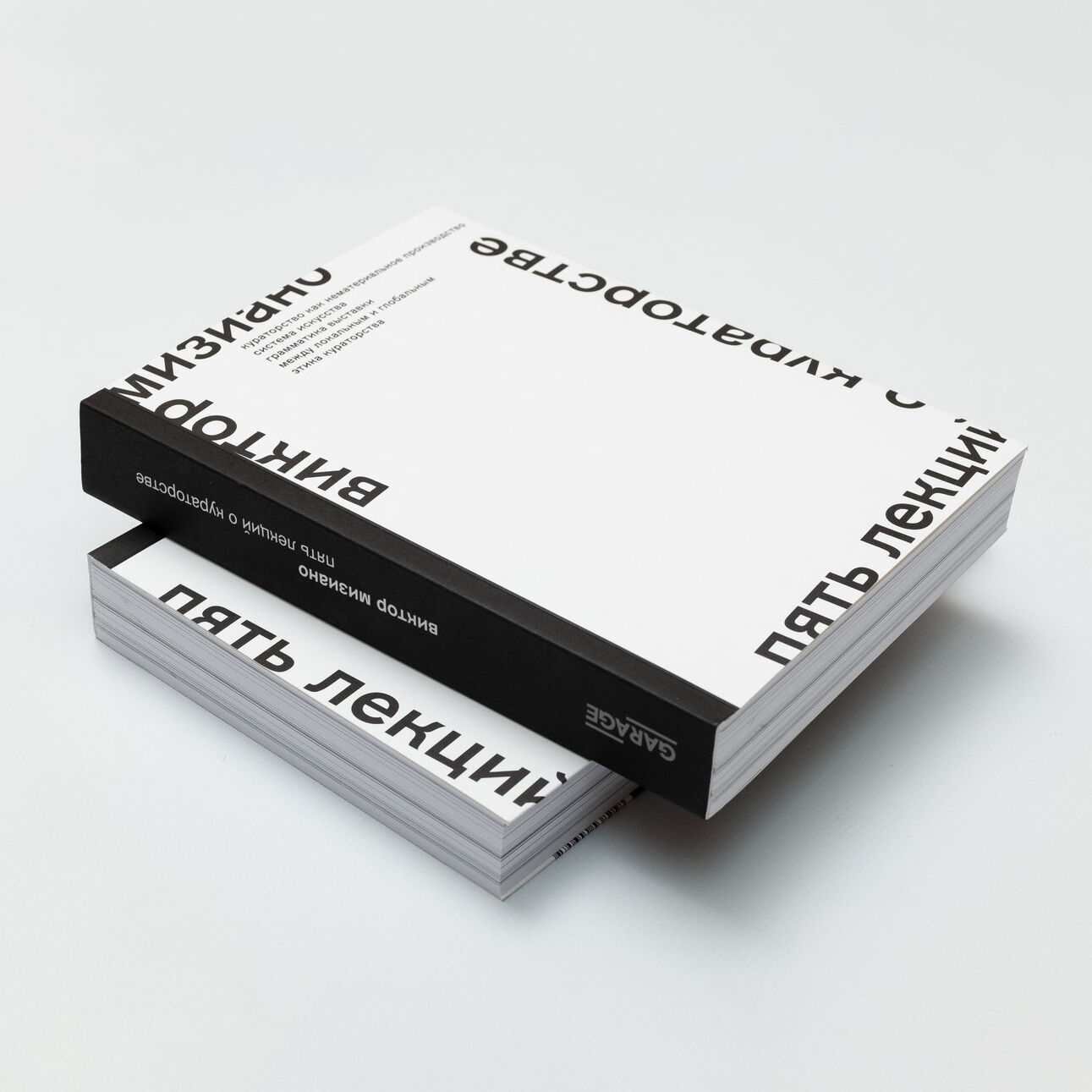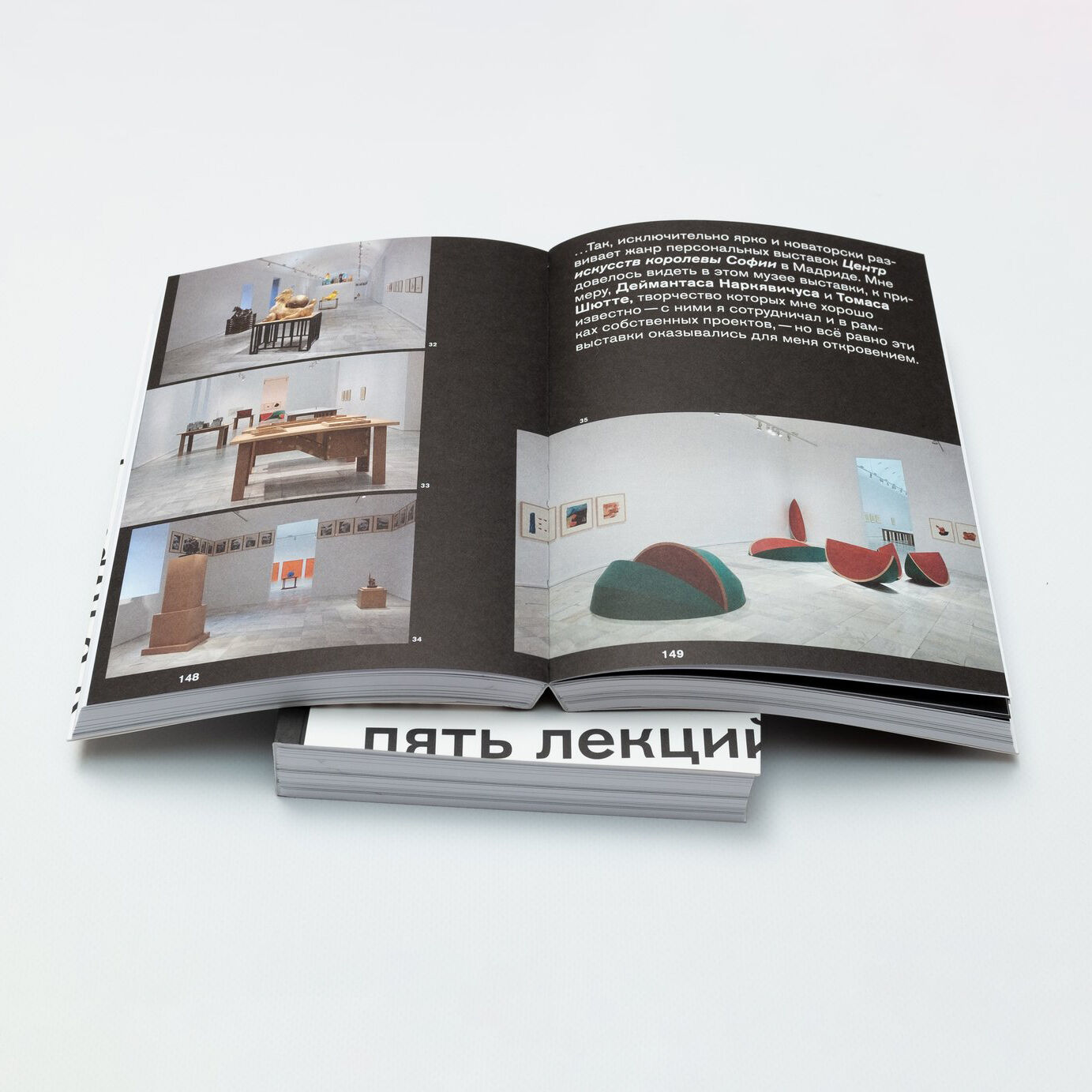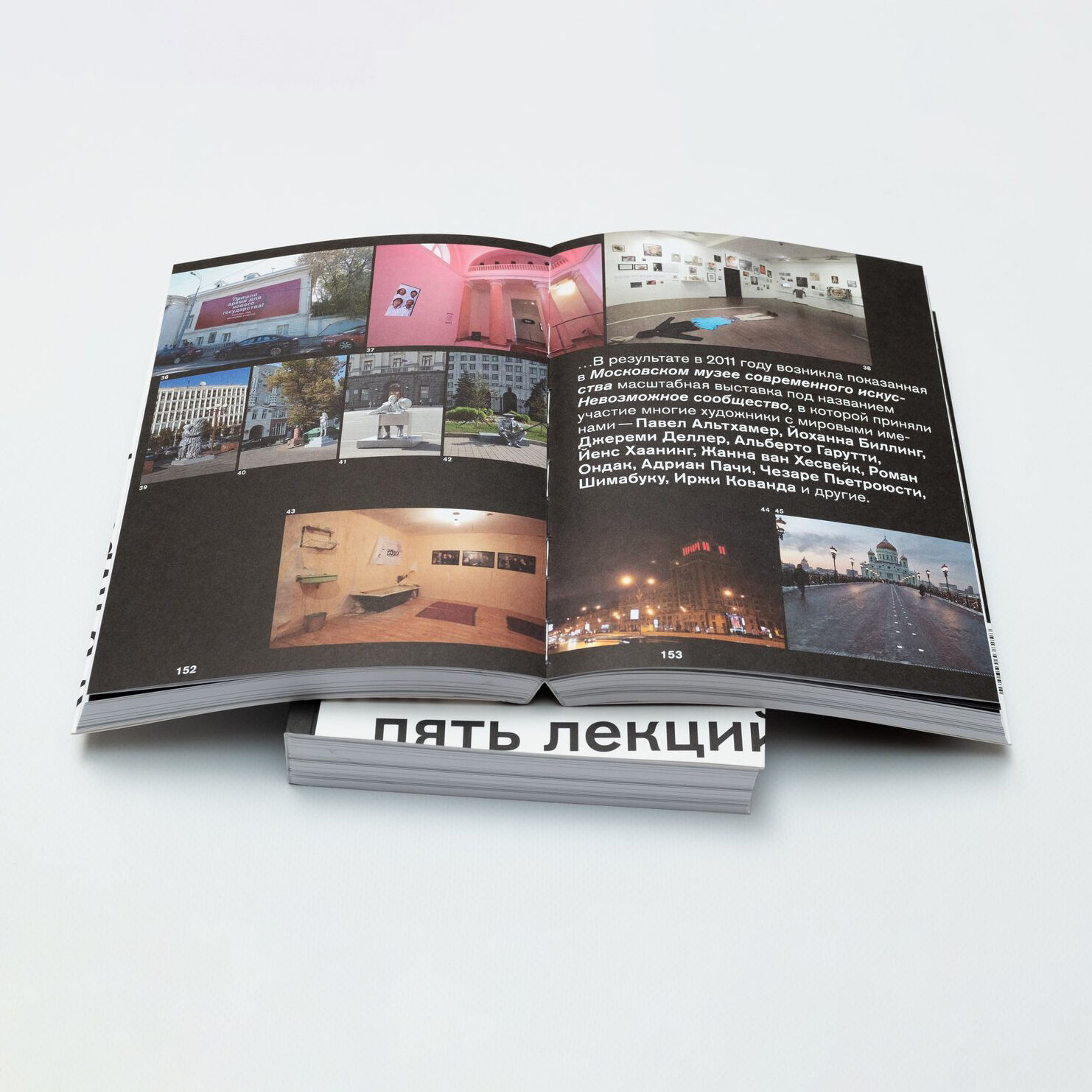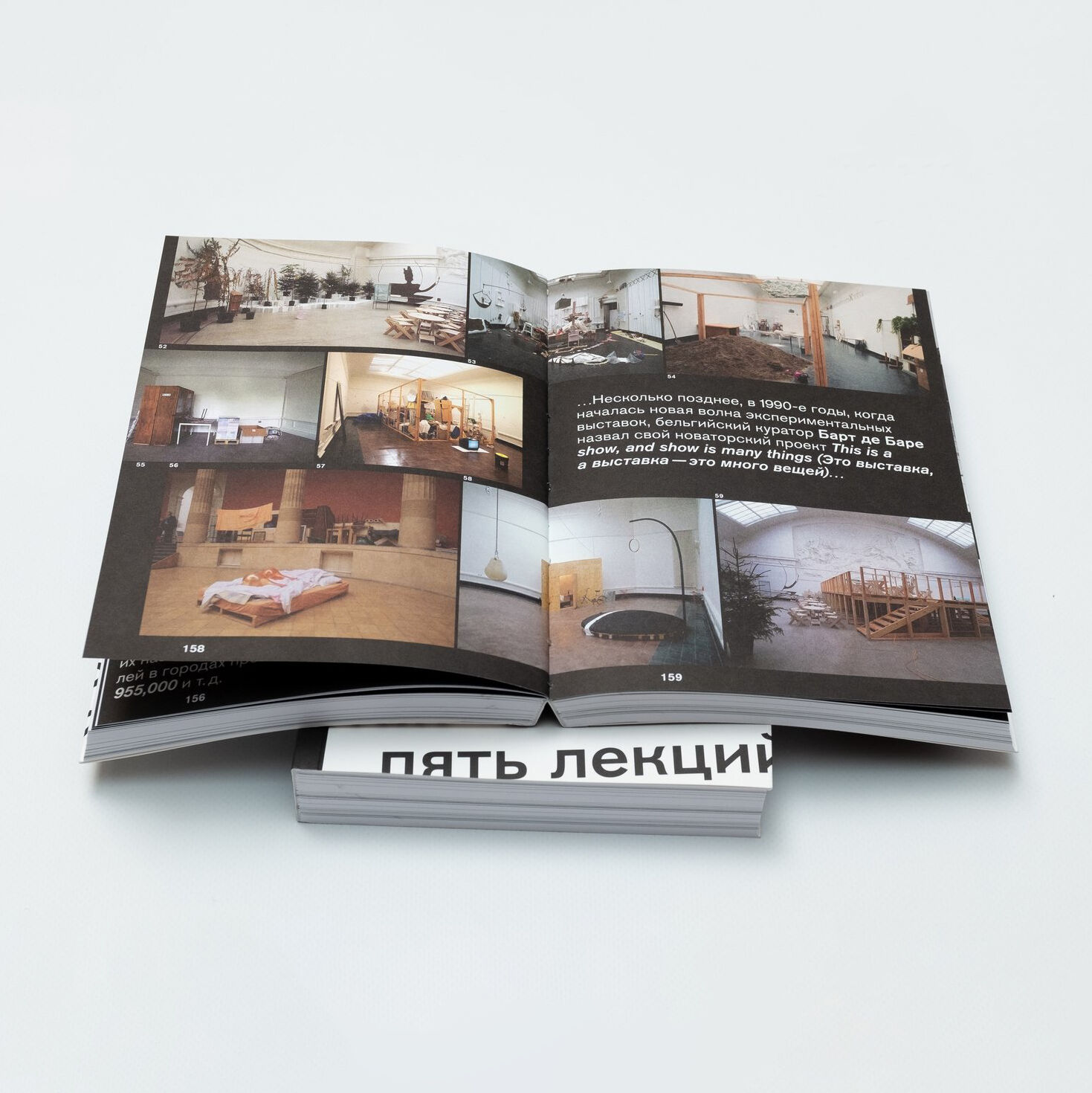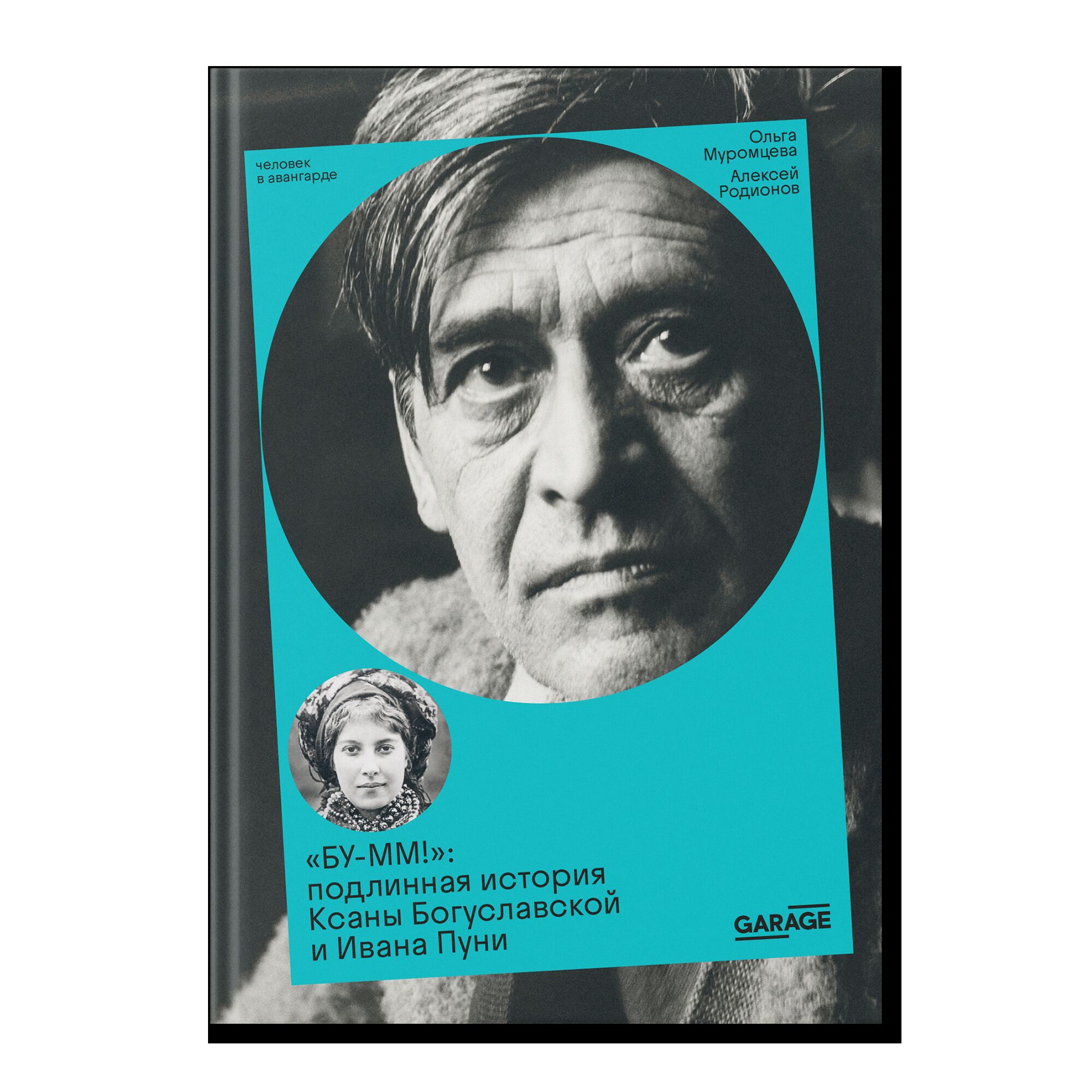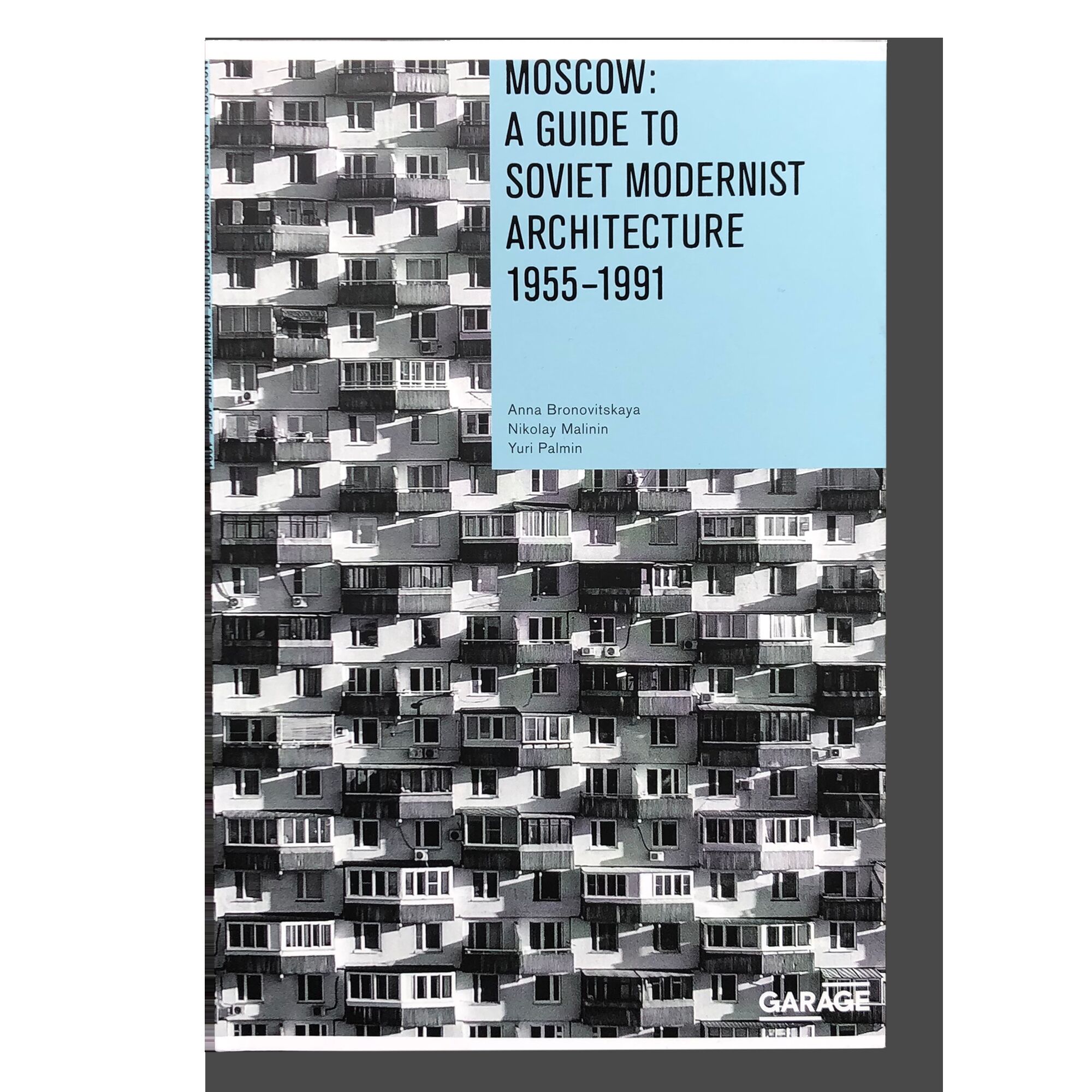Five Lectures on Curatorship
- Year: 2021
- Language: Russian
- Publisher: GARAGE
- ISBN: 9785604538258
- Page: 324
- Cover: paperback
- Edition: 2000
- Format: 142×195/21
- Editor: Сидакова М., Щеглова И.
- Designer: Заев К.
- About the Book
A new edition of the book that traces the history of curating, drawing on the experience of exhibition making in Russia.
Viktor Misiano’s Five Lectures on Curatorship is the first attempt to summarize the practice of a Russian-speaking curator, a unique opportunity for a local reader to get introduced to the history of curating and exhibition making and explore selected cases from the author's professional practice. Misiano puts international concepts associated with this profession into the Russian context, illuminating the relationship of the local art system with global processes, as well as with political and social trends and events.
The book's title should be taken literally: five lectures that Misiano gave at Moscow’s UNIC Institute cover fundamental notions and the history of curatorship, the art system wherein the curator operates, their position in the contemporary art world, and the ethics of curatorship. With one of its central ideas being the relational, dialogical nature of curatorial practice, the book also provides a psychological portrait of the curator's personality, of their life and work mode.
Laying out a theoretical basis for understanding the profession, Misiano addresses both works on curating and the sociology of art — and his own extensive, Russian and international, experience, contextualizing curatorship within the art system as well as through the relationship between local and global art processes. Speaking about this relationship, the author points out the ongoing change in the role of the curator in the globalized political space.
Maintaining a connection with oral speech, the “lightness” or fluidity of this lecture course also penetrates some of its key ideas, portraying curatorship as a live, constantly changing and expanding knowledge. Misiano’s analysis of the curator's work introduces the reader to the world of contemporary art, unveiling its mechanics, not hiding its sometimes implicit cynicism — and captivating the imagination with the very subject of research.
